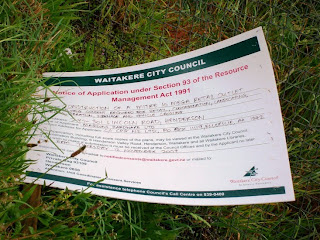The Bird Barn just off Lincoln Road in Henderson is a landmark for bird owners in Auckland. Trudging back up Lincoln Road yesterday in the rain, I decided to make this one of my stops before I let the rain beat me (I took a bus back the rest of the way home).
Interesting architecture. Hazarding a guess, I'd say the bit below is original, some kind of a storage area in the beginning, with those small and now sealed up windows. I'd need to check out some early aerials, though.
Anyway, the main thing that attracted me was the mural outside. I usually stay away from commercial murals -- but this one is beautiful, and doesn't have the company's name entwined in it.

























































